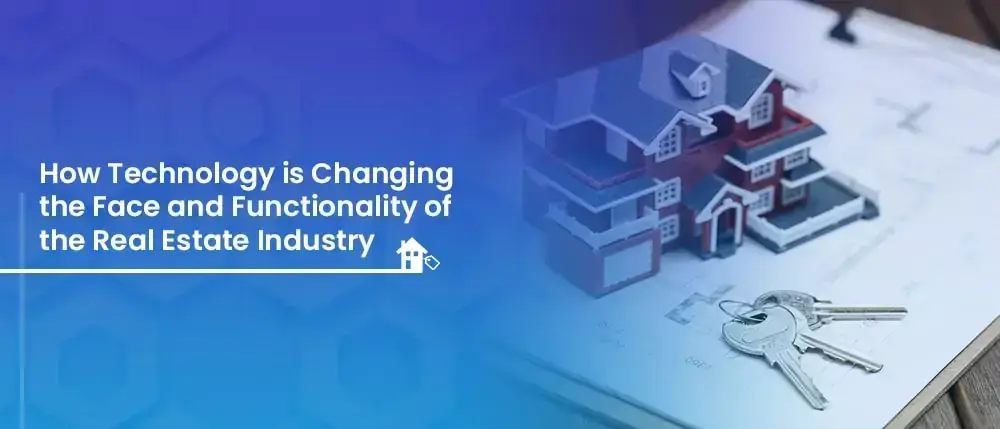
Before the requirement of personal space became a millennial and cultural lingo, it meant something else. Something physical and tangible. Something that not only offered value to the owners of the space but consistently increased in value as well. That business of buying and selling physical spaces is what we call real estate.
We are sure that you would have used the words real estate in your life or have listened to people use this in their conversations. We casually use the words real estate without giving much thoughts about what the industry is, how it functions, its evolution over the years, its adoption of new and advancing technologies, the jobs and employment landscape and more.
And most of us only know the real estate segment as a cyclic industry, which rises and falls occasionally. Personally, we see such cyclical behaviours as opportunities or threats to our investments in real estate properties. We associate the real estate sector with the prevailing economic conditions and macroeconomic trends, often predicting the volatility in market fluctuations considering factors like population, interest rates, economic strengths and weaknesses, natural disasters, pandemics and more.
For instance, the real estate market witnessed a heavy upsurge in pricing after the Second World War, after which it dipped in the 70s because of inflation. In the 80s, the prices spiked again until incidents eventually paved the way for the depression in the 90s. Cut to the beginning of the 2000s, the real estate market witnessed another boom yet again.
Today, we learn from our relatives and friends from around the world about increasing and decreasing real estate prices in major countries due to locally prevailing economic trends and cycles. But whatever we know is all superficial information.
From a business owner and a consumer perspective, there is hardly any resourcefulness in the information we seek and offer.
How much do we know about the problems persisting in the sector?
How many of us care about the market potential of the real estate sector and the profits it can fetch us if we did business the right way?
What are the challenges prevailing in the real estate segment and how tech-savvy are the real estate agents today?
Well, answers to these rather simple questions could lead to the optimization of our psychological behaviours when buying and selling properties, approaching real estate as a business in a better way, offering better customer service, retaining potential leads and customers, making the process of house-hunting simpler and doing more.
Those of you already intrigued by this, that’s exactly why we have come up with the exclusive Real Estate Guide for Businesses in the first place. This is to bring to light some of the complex and subtle topics associated with technology and running a real estate business that often go unnoticed.
Through this guide series, we aim at educating and enlightening you as a reader, consumer or business owner with insights that you hardly knew existed about the real estate industry. From the latest tech innovations and strategies, you could implement for your business to how data science can enable you to make better profits and optimize lead conversions, we will share everything you need to know about bringing in a digital transformation in your real estate business.
So, no matter if you’re a beginner or a veteran in this industry, let’s unlearn a few things and look at fresh perspectives that suit the narrative of running a real estate business in today’s day and age.
Are you ready?
Let’s get started.
What Is the Real Estate Industry?
Real estate is an all-encompassing term that combines the buying and selling of all tangible spaces like roads, structures, complexes, buildings, houses, hostels, land and more. Similar to how the healthcare industry deals with the functioning of hospitals, clinics, pharmaceutical companies and brings together doctors, nurses, patients, instrument manufacturing companies and others together, the real estate industry is the one that deals with the buying and selling of physical properties. It brings together buyers, sellers, brokers and realtors.
Now what are these properties? These could be any of the four:
Residential properties, which are your houses, condominiums, time-share properties, hostels, villas, apartments, retirement spaces and more. People who come into the residential real estate ecosystem are families, individuals or groups.
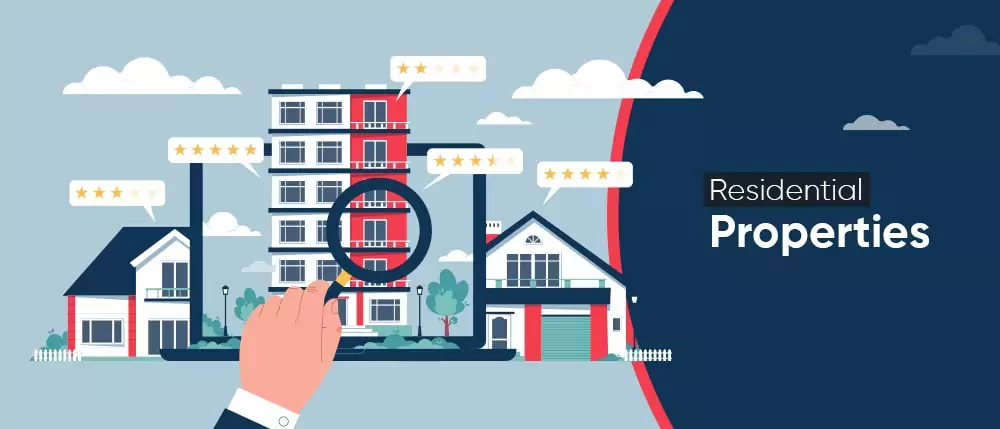
Commercial properties, which are your malls, stores, shopping complexes, parking spaces, hotels, office spaces, studios, kiosks, medical centers, hospitals and more. Business owners and space owners are part of this ecosystem, who come together on the basis of a contract. More on this later.
Land, which is the foundation for all spaces. Land generally refers to a vacant space or an underdeveloped property on which residential, commercial or industrial spaces could be constructed. Lands are mostly seen as investment opportunities in a broader sense.
Industrial properties, which include all your factories, manufacturing and warehousing hubs, construction companies, transportation and logistics, mechanical production units and more.
What Does A Real Estate Business Do?
In a more layman sense, a real estate business deals with the buying and selling of properties associated with any of the four types of spaces we just mentioned above. Based on the scale of operations of a business and the legacy passed forward, real estate companies and businesses specialize in one or more specific market segments.
For instance, there could be a real estate business that deals with only residential properties whether it is construction or simply sales. While another could specialize in dealing with lands. A few market players also exist that have carved a space for themselves in all niches in real estate and you could see their brands and presence in all the four classes of real estate properties.
In simple words, a real estate business connects buyers and sellers, where sometimes the sellers are the ones that construct or own the space as well.
To sum up what the real estate industry does, understand that it involves:
- The construction of buildings
- The construction of residential buildings
- The sale of buildings and lands
- And agents who could be either sellers’ agents or buyers’ agents
Types of Real Estate In Modern Era
Now that we have understood the fundamentals of the real estate sector, let’s dive in a little deeper to understand the real estate landscape. You could classify the entire landscape into seven categories:
- Rental
- Purchase/Ownership
- Construction
- Leasing
- Mortgage
- Smart City
- And Digital Real Estate
Let’s look at them individually in brief.
The rental sector involves the usage of a specific area or space for a temporary duration on a monthly, weekly, fortnightly or annual payment cycle basis. People looking to rent out spaces could look for properties in the commercial sector, residential sector or industrial sector. A family looking to move into a rental apartment in a new city, a startup looking for a space to operate out of or a manufacturing company looking for warehousing spaces could all be examples of rental requirements.
An interesting statistic: over 2.4% of all the housing units are up for rent.
Unlike rented spaces, ownership of properties involves the transfer of ownership of a space from one owner to another on a payment. Again, the property purchased could be a residential, commercial or industrial space. In September 2019, the median sales expenses for the residential properties bought was close to $299,400.
This is a very different segment in the ecosystem, where new spaces are built or constructed for diverse purposes. The finished properties are then let for sales or rentals depending on market conditions, builder practices and more.
Leasing is a concept very similar to rental but it differs in the fact that the duration is locked for a specific duration, which is mostly long-term. Most of the commercial spaces, manufacturing hubs, factories, multi-national companies office premises and more are leased for specific, long-term durations.
Mortgage as a concept is similar to your home loans. Applicable to all the types of real estate sub-sectors, mortgaging is when you buy a property on a credit system with specified rate of interest for a repayment tenure or when you buy a loan for the purchase or lease of a property by claiming on an existing property.
In the US, mortgage debt is one of the highest debts, where only close to 37% of the house owners are mortgage-free. Monthly mortgage payments, on average, are above $1,500.
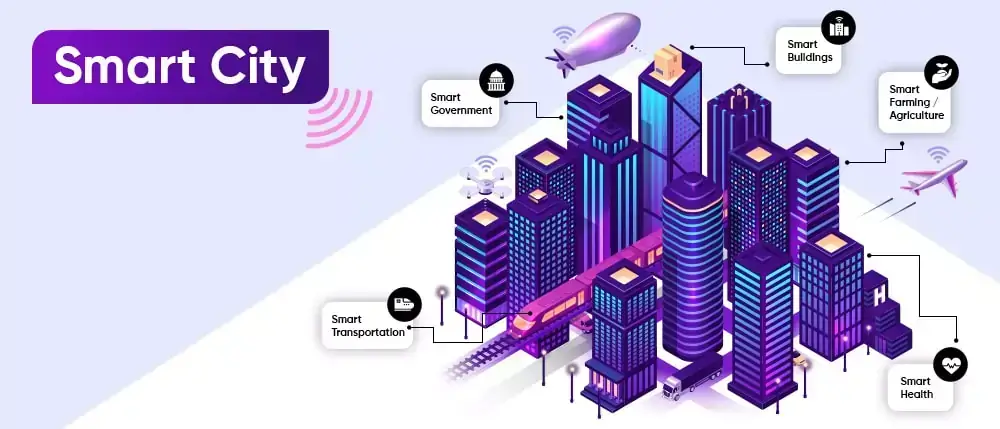
Smart city is all the aspects of your smart watches, smart television, smart refrigerators, home automation systems, laptops and every other gadget combined and magnified. Around the world, countries are keen on setting up and building futuristic cities that are aimed at elevating the life, livelihood and lifestyles of people from all walks of life.
These are the cities that fiction movies and series envisioned. A smart city has all the latest technological concepts implemented. Artificial intelligence, blockchain, the Internet of Things, data science, Big Data, virtual reality, augmented reality and every other concept you could think of are part of a smart city’s functioning.
The development of smart cities is the result of the amount of population moving into urban areas or cities every week. Statistics reveal that in the 1950s, only 29% of the entire population lived in cities. This almost doubled to 50% in the year 2008 and by the year 2040, it is estimated that the number would be around 65%.
As the population that moves into cities increases, newer demands and challenges are bound to popup. And if there’s one element that could tackle them all, it would be technology.
A smart city has most of the redundant tasks automated, encourages and supports connected devices and empowers its residents with analytics and insights to make informed decisions about their lifestyle.
For instance, an automated electricity measuring unit that gives in real time the amount of electricity you’ve consumed in a duration and automatically makes the payment from your wallet. With graphs and charts – through artificial intelligence and analytics – the smart city component could also visualize what device consumes the most amount of electricity, how you fare against your neighbors, ways to efficiently use electricity and do more all from a single app.
A smart city also has automated traffic units and grids and has wireless internet hotspots deployed throughout the city for convenience. Data and the internet are at the fulcrum of the operations of a smart city and in other words, we call this the Internet of Things. Together, the technological concepts and elements would work on optimizing and fixing:
- Environment – air quality, water consumption and saving
- Safety - roads and infrastructure
- Transportation – smart transportations, card or wallet-based payments, carpooling and more
- Buildings – automated surveillance systems, biometric-based entry or exit solutions and more
- Utilities and more
According to Cisco, smart cities can optimize energy efficiency by close to 30% in the next 20 years. Also, for those of you looking at the rise of smart cities as business opportunities, the market is valued at around $34bn.
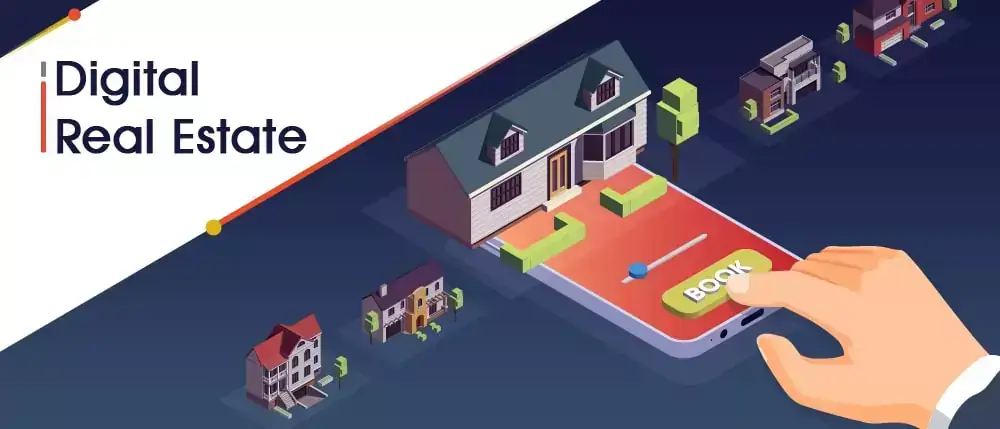
The on-demand economy is the current rage in the world with every other business or industry you could think of migrating to an on-demand-based business model. Like you know, the on-demand economy is all about bringing you preferred products and services at the location of your choice and time of your choice.
From the movies you select and watch to the food you order, most of the things you do on a daily basis are already part of the on-demand economy. As far as real estate is concerned, the trend is quickly catching up with several companies waking up to the value and potential of this concept.
From the perspectives of both buyers and sellers, the on-demand economy offers unique benefits which we have identified below.
- The on-demand market makes it easier for buyers and sellers to meet and communicate with each other through an app or a portal.
- It facilitates the offering of personalized services, meeting the unique demands and preferences of diverse buyers and sellers.
- It saves time, resources and expenses involved in the real estate business and optimizes efficiency in operations.
- It simplifies the overall hassles involved in the purchase or renting of properties.
- Middle-men are generally eliminated, which is preferred by a portion of the population.
- Everything is digital – from hunting for your preferred space to payments and contracts.
- Data and visualization allow both buyers and sellers insights they could use to seek or offer better services.
Some Important Real Estate Statistics and Figures
For a better comprehension, let’s bring in some numbers and statistics.
- In the year 2019 alone, there were over 210,00 residential brokerage companies operating and generating over $200bn in revenue. On the commercial front, there were over 35,000 businesses generating a revenue of over $35bn.
- In the US alone, there are over 2 million real estate agents.
- Close to 701,000 new residential properties were sold this year.
- Over 41% of property buyers purchase a house or a complex based on recommendations.
- 67% of the real estate agents are women.
- Millennials are the biggest market segments in residential properties with over 37% belonging to this category
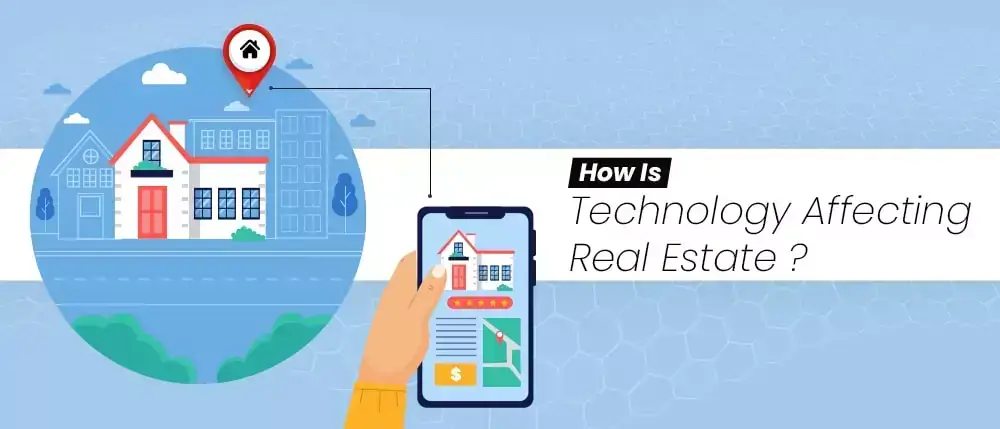
For those of you who didn’t know, over 73% of the realtors out there leverage the potential of Facebook for their work.
Over the years, technology has been immensely influencing every other market and industry it touches and real estate is no exception. From a common-man perspective, there has been a paradigm shift in the way consumers have approached buying and selling properties. The rift and the shift have been dynamic and clearly evident through today’s consumer behavior.
From finding out property details on local newspapers, personals, classifieds or resorting to conventional mediums in general, we have moved onto a space that is more personalized and convenient. Most of us now look at property listings from the gadgets we own such as our smartphones, laptops, tablets or other devices.
To throw in some numbers, over 70% of the buyers today search for their preferred homes and properties online. And from a real estate agent’s perspective, over 85% of them use texting and instant messaging services to get their deals and leads converted.
We use social media, listing websites and even virtually connect with brokers and deal with property hunting. Even transactions and tokens or monetary exchanges have moved from physical mediums to virtual mediums. Online payments, wallet-based payments, payment on credits and more have popped up to support and meet the increasing demands of consumers.
Technology is indeed facilitating a lot of convenience and fostering an environment that is beneficial for all the stakeholders in the real estate segment involved.
However, there’s also a catch here. Not all business owners understand or sense this dynamic shift happening in the real estate sector.
Does The Real Estate Sector Need A Digital Transformation?
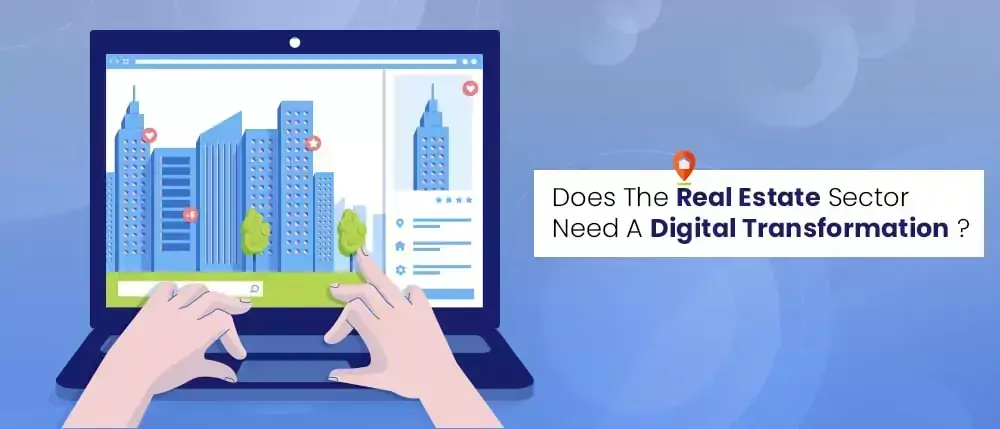
While the real estate industry is offering the best of convenience to its customers, we need to acknowledge the fact that it is often a minor portion of the segment that is making good use of technology.
At the other end of the spectrum are business owners, real estate agents and property listing services that still deploy obsolete practices that still require manual interventions at consistent stages of interactions.
For a lot of business, digital transformation equates to replacing registers and ledgers with personal computers (often desktops) and installing spreadsheets and word processing documents. Not to be rude but this transformation is almost over two decades old and a lot of tech enthusiasts consider these as obsolete today.
Digital transformation in real estate goes beyond simple implementations of technology like what we mentioned. Getting a fast-paced internet is a basic solution but what you do with the superfast connectivity is what the value you derive from digital transformation is all about.
In that sense, the real estate sector still awaits a radical tech revolution, where most of the outdated processes and technologies will be permanently done away with and newer and advanced concepts will be implemented in operations.
The modern-day scenario poses new threats and challenges in the real estate landscapes. So, real estate agents and businesses need solutions that can handle and tackle these unique challenges. The demands presented by property seekers have dramatically changed and you – as a real estate business owner – cannot implement age-old practices.
For instance, single-parents and working women come with their own demands in the residential properties sector. From the neighborhood being safe and inclusive to facilities being close by, the way we approach search and listings have changed. And then there are personalized requests such as pet-friendly spaces as well.
From a generic, blanketed approach to finding properties, we are moving to a zone where each and every single of our concerns and claims are to be answered and resolved by realtors and agents. And this is by far the most challenging aspect in running a real estate business.
Thankfully, technology has solutions to any new challenge that keeps popping up in this space. From artificial intelligence and machine learning-based recommendation engines that match consumer preferences with appropriate properties to virtual reality solutions that allow buyers to visit their preferred properties from wherever they are, technology has offered convenient solutions to almost every hurdle a buyer or a consumer can think of.
Besides, we also have blockchain technology, home automation systems, connected devices, CRM software applications and more to make our lives easier.
But does your real estate business have these systems and implementations deployed?
That’s probably a million-dollar question. But hey, that’s why the guide is here to help you out as well.
Let’s just take it step by step.
Wrapping Up
So, this is what the entire series is going to be about – challenges in the real estate sector and our presentation of tech-based solutions to all of them. What we are confident about is the fact that by the end of each chapter, you would be able to connect the challenges with the ones prevailing in your business and identify optimum solutions to them.
This way, you could improve your customer experience, reduce expenses, and make way for a profitable real estate business in 2021. And if you intend to get started with digital transformations for your real estate venture already, get in touch with us for a personal consultation today.